Articles
USING VIDEO GAMES TO ENHANCE TEACHING AND LEARNING
By Anya Kamenetz
The Hechinger Report 10/15/2013
There’s a question caroming off the walls of many teacher lounges, company boardrooms and research centers alike: Do video games belong in America’s classrooms?
For game designers, the answer is clear. “We feel like that argument has been made and answered—and it’s ‘yes,’ ” says Karina Linch, senior vice president of product management at BrainPOP, a company that produces educational games that are used in almost 20 percent of the nation’s schools.
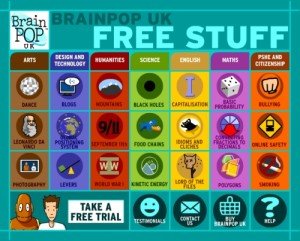 Game designers see opportunities to help students learn through a medium they love and toward which they naturally gravitate.
Game designers see opportunities to help students learn through a medium they love and toward which they naturally gravitate.
For teachers, the answer is mixed. Incorporating games into the classroom isn’t always within teachers’ comfort zones, though a recent study by the Joan Ganz Cooney Center and BrainPOP suggests the tide may be turning. While a nationally representative survey of 500 teachers showed that only 18 percent use games in class on a daily basis, 70 percent said that using games increases student engagement. Less than one in 10 teachers reported negative experiences with using games in their lessons.
The main question that remains for game designers is how to create games that best enhance teaching and learning.
“It’s really about copious data well represented for teachers and students,” said Jeff Curley, deputy director of iCivics, a company founded in 2009 by retired Supreme Court Justice Sandra Day O’Connor to promote good citizenship through engaging games, at the 10th Annual Games for Change Festival in New York City last week. “And that presents a really great
in 2009 by retired Supreme Court Justice Sandra Day O’Connor to promote good citizenship through engaging games, at the 10th Annual Games for Change Festival in New York City last week. “And that presents a really great
The data Curley has in mind would help teachers pinpoint their students’ struggles so they can know when and where to provide extra help, among other things.
Dan White, CEO of Filament Games, a studio that produces learning games, said at the festival that another challenge lies in getting teachers, who may not be game-savvy, to accept the value of teaching through games and to learn how to best use games to strengthen their lessons.
 In an educational world increasingly focused on testing and numbers, games designers feel that a fundamental draw of using games in the classroom is their ability to reduce the risks associated with wrong answers or failure.
In an educational world increasingly focused on testing and numbers, games designers feel that a fundamental draw of using games in the classroom is their ability to reduce the risks associated with wrong answers or failure.
“You’re expected to try and try again. We try to design our games around that,” said Derek Lomas, the lead game designer at PlayPower Labs, a company dedicated to designing educational games that can work on almost any computer. “When the point is to try and not necessarily to succeed, I feel like that’s where we can be successful. I don’t want to see games take on the high-stakes experience that tests have.”
COULD WE MAKE POPULAR VIDEO GAMES LIKE SKYRIM MORE EDUCATIONAL?
By Anya Kamenetz
The Hechinger Report 10/15/2013
Screenshot from Skyrim
I sometimes wonder what educators and video-game developers might come up with if they ever sat down together and decided to make mainstream commercial games more educational.
Video games are a huge business. When the latest installment of the Call of Duty series came out in November, it racked up more than $1 billion in sales in just 16 days. In 2010, U.S. video-game sales exceeded $25 billion, according to the Entertainment Software Association.
That’s a huge audience, and it’s ripe for education.
And we’re not just talking about teenage boys here. The average age of gamers is 37, and some 42 percent are women, the statistics show.
Video games are in a perfect position to help educate people. Developers already have to construct their games so people can learn how to play them without consulting bulky manuals or boring tutorials.
Think about all the other lessons they could sneak in.
To be clear, I’m not talking about games whose main purpose is education. Educational games certainly exist. Former Supreme Court Justice Sandra Day O’Connor, for example, is working with a nonprofit called iCivics to make video games that teach civics lessons.
They’re fun, but I can’t imagine anyone playing them over, say, Angry Birds—the fantastically popular game from Finnish developer Rovio Mobile. (Since its launch in December 2009, Angry Birds has been downloaded more than 500 million times by users worldwide.)
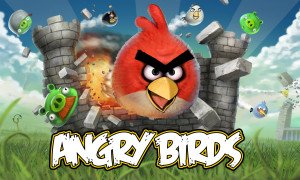 There are some obvious hurdles to overcome in getting educators and game-makers together. Someone would have to convince game developers to cooperate with educators. And there would have to be a balance between “fun” and “learning” that didn’t negatively affect the bottom line.
There are some obvious hurdles to overcome in getting educators and game-makers together. Someone would have to convince game developers to cooperate with educators. And there would have to be a balance between “fun” and “learning” that didn’t negatively affect the bottom line.
Disclaimer: I’m definitely not suggesting that popular video games become classroom tools. Rather, I’m just suggesting that we subtly try to beef up their educational value, as millions of people are going to be playing them.
Some game-makers are already interested in the idea. Gabe Newell, who co-founded the ridiculously successful game company Valve, has gone on record saying that popular games can still be educational.
“There tends to be this distinction between games that are going to be good for education and games that are going to be commercially successful. I’m not sure I buy into that,” Newell said at the Games for Change Festival in New York City this past June. “We can make educational, commercially successful games.”
Valve has received high praise for the educational aspects of its Portal series—games that incorporate realistic physics and puzzles.
Leslie Redd, Valve’s director of educational programs, says she hasn’t heard of companies working directly with educators on mainstream games, but she believes it could happen in the future. More and more former game developers are working with nonprofits to ground games in educational research, she said.
“It’s starting. I’m hearing it,” Redd said.
So how could we make a mainstream commercial game more educational?
Like many, I have been immersed in the new video game Skyrim for the past month or so. A roleplaying fantasy game set in a largely frozen landscape, Skyrim is a “sandbox” game, meaning you can roam the massive world freely and explore and adventure however you’d like.
Here are a few ideas I came up with while playing:
Reading:
The world of Skyrim is littered with hundreds of books—and you can actually read each one. Most are only a few pages long and there’s almost never a reason to read them other than to immerse yourself more deeply in a world’s lore. But what if you gave players a better reason to read the books? There is at least one quest in Skyrim where you have to read a particular book and follow up on its contents. What if 100 books in the game required that same level of attention? And what if you sprinkled in some tougher vocabulary words to get players thinking more?
Math:
One of the best parts of Skyrim is a player’s ability to gather up materials and make personal swords, armor, potions, etc. Each item requires players to combine different ingredients in different ratios. There’s a great opportunity here, with a little work, to make an interface that requires players to do some multiplication (or even algebra) to make large batches of items, which is a common practice in games.
Also, like many roleplaying games, players have to manage their money by selling off items and looting things from around the world. With some tweaks to the interface, the game could easily make money management more mathematically rigorous by having players crunch some of the numbers in their heads.
History:
About the same time I started playing Skyrim, I also started reading a book on the history of Prussia. So as I roamed the world of Skyrim and talked to people about current political battles, I kept thinking, “What if this game were about the history of Prussia?”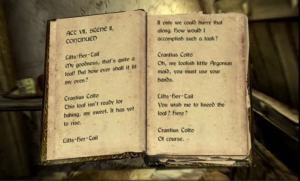
What if instead of having players interact with the leaders of the Nord rebels or Imperial forces, they were interacting with Frederick the Great and Maria Theresa, learning all about the War of the Austrian Succession?
Now, I’m not sure Skyrim could survive a Prussian conversion, especially since it would require removing magic and dragons, but there are lots of other games that could benefit from some tweaks that would add more historical content.
One great example is Assassin’s Creed II, which is set in a virtual version of Renaissance Italy. There’s actually a lot of good historical information, but like the books in Skyrim, it is easily bypassed or ignored. By adding more texts that need to be read in detail, the game’s developers could make the experience considerably more educational.
These are just a few ideas from one gamer. What kind of ideas can you come up with, gamers? How else can we make our video games more educational?
APP SMART: Teaching Kids Math Through an Array of Apps for tablets and Smartphones
By Kim Eaton
NY Times – 11/13/2013
My 5-year-old son recently explained to my 3-year-old son that they were two years apart. Three years old plus 2 years old equals 5 years old, he explained. I was hugely proud of his reasoning and math skills. He hasn’t learned them exclusively at school. His math learning has happened, in part, on a tablet running educational math apps that we’ve found for him. He’s learned addition and subtraction, and as he gets older he’ll be learning even more complex math this way, too.
The most impressive math education app I’ve seen has to be DragonBox Algebra 5+. What impresses me is that its clever design can teach all sorts of complex algebra concepts without making children feel as if they are learning mathematics.
The app is like a game, and it starts at an abstract level: The player has to match small cartoon icons with their matching “dark” alternatives, eventually arranging the pieces on the playing board so that only the magical “box” of the game’s title is left on the board. As the child plays through the levels, the abstract cartoon icons are eventually replaced with numbers and proper mathematical symbols, but with the same gameplay and sound effects.
It’s fun, and the graphics and sound effects are attractive enough to keep children playing. And while they’re playing, they are unknowingly learning some of the same math principles that you need when you’re doing algebra — addition, subtraction, balancing an equation, even concepts like parentheses. Play it yourself and you’ll see how much fun it is.
Perhaps the main drawback to this app is its complicated menus. If you’re going to use it with 5-year-olds, it’s probably best to keep them company so they don’t get frustrated by instructions they cannot read. It is also surprisingly expensive, at $6, but you get over 200 puzzles for your money. The app is on iOS and Android.
The adorable YodelOh Math Mountain app also stays within the learning-through-games genre, but for a more introductory level of math. This app involves a cartoon yodeler who ascends a graphical mountain over time — if he gets to the top, he yodels his way to his doom over the edge. To keep the yodeler from climbing the peak, the player has to answer math questions against the clock.
 For example, the question may be “10 x 15 = ?” and the five options are “0, 1, 50, 150, 200.” Tapping the right answer saves the yodeler, whereas taking too long or tapping the wrong answer makes him take a step up the mountain or get butted uphill by a cartoon ram. The idea is that by keeping the entire app lighthearted and full of amusing sounds and images, children do not notice that they’re being tested on their arithmetic skills.
For example, the question may be “10 x 15 = ?” and the five options are “0, 1, 50, 150, 200.” Tapping the right answer saves the yodeler, whereas taking too long or tapping the wrong answer makes him take a step up the mountain or get butted uphill by a cartoon ram. The idea is that by keeping the entire app lighthearted and full of amusing sounds and images, children do not notice that they’re being tested on their arithmetic skills.
The app offers a less extensive learning experience than DragonBox, but it still has the ability to hone specific math skills because you can choose whether to test just basic subtraction, addition and so on. It’s $3 on iOS and, $2 on Android.
For an alternative app, try Madagascar Math Ops — a game filled with characters from the Madagascar cartoon movie franchise. Like Math Mountain, the app has a multiple-choice mental math quiz, but Math Ops has more animation. Winning moves are rewarded with a short in-app game — flying penguin fun that will remind you of Angry Birds. There is a free edition with limited levels on both iOS and Android; the full version costs $3.
For a slightly more traditional route, try MathBoard. It has game-like elements, but it’s based on a simulated old-fashioned school chalkboard. The app’s screen is split into a quiz area and a work area. In the quiz area, a math puzzle is posed using traditional notation, perhaps something like 47 – 5 =? Players choose the  answer from a list of numbers to solve the puzzle, and they can use the faux chalkboard on the other side of the screen to work out the solution. If they get stuck, a “problem solver” window that shows each stage required to correctly work out the answer can be brought up. It’s like help from a private math tutor.
answer from a list of numbers to solve the puzzle, and they can use the faux chalkboard on the other side of the screen to work out the solution. If they get stuck, a “problem solver” window that shows each stage required to correctly work out the answer can be brought up. It’s like help from a private math tutor.
There are other game options available in this app, like choosing which number is greater than another. Because you can adjust the difficulty of the puzzles, and the problem-solver teaches the player about math, this app is a great way for children to practice their math skills. My chief complaints are that MathBoard could be more fun without distracting from the learning aspects, and that it has a $5 price tag on iOS and Android.
MORE APP SMART – Help with Thanksgiving
MAKING THE NEXT GENERATION OF EDUCATIONAL VIDEO GAMES
Time Magazine 11/5/2013 REDWOOD CITY, Calif. — The video games that Kyle Brda, a ninth-grader from Redwood City, Calif., plays at home typically involve shooting people. But on a recent day in September, he spent the afternoon at an office building in Silicon Valley, constructing wind and solar power plants in a virtual world that may soon be accessible from his classroom.
Brda is one of 110 unpaid student testers at GlassLab, a nonprofit video game development group based at the California campus of publishing powerhouse Electronic Arts. The Gates and MacArthur Foundations gave GlassLab $10.3 million to create six educational video games they hope will change the way kids learn.
Around the country at places like GlassLab, designers are working with educators and scientists to create the next generation of educational video games that can teach skills and concepts beyond rote memorization, and assess how much students are learning, all while giving kids something they will actually want to play.
“[We’re] working toward this dream that we won’t be taking a test, but we’ll just know from your learning and game play how you’re doing,” said Kurt Squire, director of the Games Learning Society Initiative at the University of Wisconsin-Madison, a group that designs and studies educational video games.
Video games in the classroom are nothing new. Millions of students have hunted buffalo, forded rivers and died of dysentery in the name of learning about the Oregon Trail since that video game was developed in the 1970s. But in the majority of schools, video games are used sparingly if at all. And even then, most classroom video games are little more than glorified worksheets or dressed-up drill-and-kill test prep. Even the Oregon Trail offers little that can’t be gained from textbooks.
Most states in the country are on track to begin giving computer-based standardized tests to students by 2015 as part of the shift to the Common Core State Standards, a set of K-12 standards that have been adopted by 45 states. The tests will, at times, deviate from traditional multiple choice questions, requiring students to write out answers, solve math problems, order sentences or identify multiple correct questions, but will still be fairly traditional.
 SimCityEDU is designed to teach students about how systems interact; they must keep air pollution down without bankrupting the city.
SimCityEDU is designed to teach students about how systems interact; they must keep air pollution down without bankrupting the city.
While video games will never completely replace other types of learning or standardized tests, they’ve got untapped potential, proponents say. Games can require higher-order thinking that goes beyond the constraints of a normal exam.
GlassLab’s first game, SimCityEDU, is aligned with Common Core and their scientific counterpart, the Next Generation Science Standards, to make it easier for teachers to integrate it into their classroom. Although it’s focused on teaching kids about environmental problems like pollution, equally important is its lessons about how systems operate—the relationship between a city’s population, budget and power plants, for instance—in order to improve broader problem-solving skills. To succeed, players must predict consequences. For one mission, students must reduce pollution while simultaneously growing jobs. If they simply demolish coal plants, they lose jobs. The city’s budget limits how many solar or wind power plants they can build.
As Brda tinkered with SimCityEDU, his every move was being recorded, from what he clicked on to how long he spent on each screen – the same is true for every person who plays the game. GlassLab is attempting to wrangle these millions of data points into measurements of engagement and understanding. The goal is to be able to give teachers instantaneous—and useful—feedback. A teacher may get an alert that shows a student is struggling or appears to be disengaged, and can immediately provide the student with one-on-one attention or attempt to get back on track.
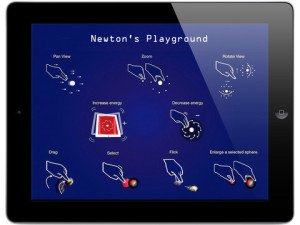 There are many other new educational games in the works. Newton’s Playground, developed at Florida State University, tries to teach basic physics concepts such as gravity and kinetic energy by having students draw ramps, levers and pendulums to move a ball toward an end point. Quantum Spectre, made by Boston’s EdGE, a part of the math and science research organization TERC, makes players use mirrors to refract laser beams. To succeed in Surge, created at Vanderbilt University, players must work with acceleration and inertia to propel a spaceship through an obstacle course.
There are many other new educational games in the works. Newton’s Playground, developed at Florida State University, tries to teach basic physics concepts such as gravity and kinetic energy by having students draw ramps, levers and pendulums to move a ball toward an end point. Quantum Spectre, made by Boston’s EdGE, a part of the math and science research organization TERC, makes players use mirrors to refract laser beams. To succeed in Surge, created at Vanderbilt University, players must work with acceleration and inertia to propel a spaceship through an obstacle course.
The theory is that in mastering these games, students will have picked up some understanding of the laws of science, even if they haven’t realized it. The next step is making that connection clear for them, whether through teacher-led lessons or the game itself.
“Our goal is to connect the intuitive understanding that students develop through playing games with a formal understanding,” said Doug Clark, one of the lead creators of Surge.
The trick, developers say, is to create a game that blends education and entertainment to tap into a fundamental truth about video games: They can be very addictive. Those in the educational video game industry refer to this challenge as the “broccoli and chocolate” problem. You can’t just take something good for you—broccoli or learning, in this case—and cover it with something you like—say, chocolate—to create something tasty.
“If you just go … from the game-design angle saying, ‘Let’s just develop what would be a good game based on what we know about developing recreational games,’ it tends to be very shallow,” Clark said. “On the flip side, if you just start from the [learning] research end, you tend to create a really horrible game.”
Student testers of SimCityEDU say they are learning things from the game—even if not about coal plants. Athena Nair, a seventh-grader from Castilleja School in Palo Alto, Calif., who was visiting GlassLab the same day as Brda, said she was already conscious of pollution and the environment. But she’d never thought about how much going green could cost before.
“It’s like real life,” she said of the requirements to reduce pollution without bankrupting the city. “This could happen, and you’d have to fix the deficit.”
FIRST ANNUAL NATIONAL STEM VIDEO GAME CHALLENGE
(Joan Ganz Cooney at Sesame Workshop and E-Line Media Awards)
New York and Washington, DC, March 30, 2011 – Aneesh Chopra, United States Chief Technology Officer, announced today the winners of the National STEM Video Game Challenge, a competition to motivate interest in Science, technology, engineering, and math (STEM) learning by tapping into the natural passion of youth for play and making video games, at the Newseum in Washington D.C.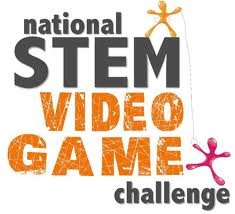
The first year of the Challenge featured competitions for students and developers. Twelve students from across the U.S. in grades 5-8 were selected as winners of the Youth Prize for their original game designs. In the Developer Prize category, for emerging and experienced game developers, the science themed game You make Me Sick! Was awarded the Grand Prize and a collection of math games titled NumberPower: Numbaland! Received both the Collegiate and Impact Prize.
“Three cheers for the National STEM Video Game Challenge for catalyzing this entertaining and educational approach to harnessing American ingenuity, all for the cause of science, technology, engineering and math education,” said Chopra. “It is efforts like these that will ensure our nation’s continued economic and technological leadership well into the 21st century.”
The Youth Prize winners were selected from a group of over 500 entries for their ability to use STEM concepts to design engage, innovate and well-balanced games, with special recognition for those games that also incorporated STEM themes. The 12 winners of the Youth Prize are:
 The students will each receive an AMD-based laptop computer and educational software. A cash prize of $2,000 will also be awarded to their school or a non-profit organization of their choice. More information of the Youth Prize and a video featuring the winners can be found at www.stemchallenge.org.
The students will each receive an AMD-based laptop computer and educational software. A cash prize of $2,000 will also be awarded to their school or a non-profit organization of their choice. More information of the Youth Prize and a video featuring the winners can be found at www.stemchallenge.org.
For the Developer Prize, the Grand Prize was awarded to Filament Games’ Dan Norton and Dan White for You Make Me Sick! They will receive $50,000 for their game which teaches children about the physical structure of bacteria and viruses, as well as, how they are spread. The game prototype can be played at www.filamentgames.com/projects/gils.
NumberPower: Numbaland! produced by graduate students Derek Lomas of Carnegie Mellon University, Dixie Ching of New York University and Jeanine Sun of the University of California at San Diego, was the winner of the Collegiate and Impact Prizes and will receive $50,000 in total. The collection of four games allows children in kindergarten to grade 4 to construct a set of skills that help develop their sense of number concepts. The games will be available on different platforms, including the iPad later this spring. The prototype can be viewed at http://numbaland.com.
“The National STEM Video Challenge demonstrated that kids will eagerly tackle math and science when they can engage with the subject using video game design,” said Allyson Peerman, President, AMD Foundation (Advanced Micro Devices, Inc. (NYSE: AMD or AMD is an American multinational semiconductor company based in Sunnyvale, California)one of the contest co-sponsors. “The challenge and the resulting video games are a testament to the power of this invaluable tool to help increase students’ critical STEM skills.”
“The innovation and creativity in these games are the hallmarks of our industry,” said Michael D. Gallagher, president and CEO of the Entertainment Software Association, the U.S. trade group representing computer and game publishers. “As these great kids show us, video games can affect societal change. They can inspire and educate a new generation of leaders ready for the 21st century jobs.”
The competition was created with generous support by the AMD Foundation, Entertainment Software Association and Microsoft and implemented by the Joan Ganz Cooney Center at Sesame Workshop and E-Line Media.
Founding outreach partners for the “National STEM Video Game Challenge” include the American Library Association, The American Association of School Librarians, Boys and Girls Clubs of America, The International Game Developers Association and Brain POP.
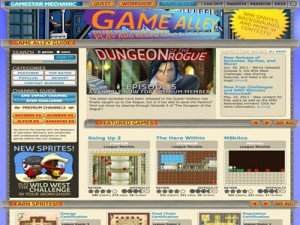 The Joan Ganz Cooney Center at Sesame Workshop is an independent, non-profit research center that is fostering innovation in children’s learning through digital media. The Cooney Center conducts and supports research, creates educational models and interactive media properties and builds cross-sector partnerships. The Cooney Center is named for Sesame Workshop founder, who revolutionized television with the creation of “Sesame Street.” Core funding is provided by the generous support of Peter G. Peterson, Genius Products, Mattel, Inc. and Sesame Workshop.
The Joan Ganz Cooney Center at Sesame Workshop is an independent, non-profit research center that is fostering innovation in children’s learning through digital media. The Cooney Center conducts and supports research, creates educational models and interactive media properties and builds cross-sector partnerships. The Cooney Center is named for Sesame Workshop founder, who revolutionized television with the creation of “Sesame Street.” Core funding is provided by the generous support of Peter G. Peterson, Genius Products, Mattel, Inc. and Sesame Workshop.
E-Line Media is a publisher of game-based learning products and services that engage, educate and empower, helping to prepare youth for lives and careers in the 21st Century. E-Line works with leading foundations, academics, non-profits and government agencies to harness the power of games for learning, health, and social impact. Find out more at www.elinemedia.com.
The Entertainment Software Association is the U.S. association dedicated to serving the business and public affairs needs of companies publishing interactive games consoles, handheld devices, personal computers, and the Internet. The ESA offers services to interactive entertainment software publishers including a global anti-piracy program, owning the E3 Expo, business and consumer research, federal and state government relations, First Amendment and Intellectual property protection efforts. For more information, please visit www.theESA.com.
The AMD Foundation connects and empowers individuals with knowledge, thereby opening doors to opportunity. The Foundation’s signature program, AMD Changing the Game, supports initiatives designed to help youth harness the power of digital games with social content, while learning critical science, technology, engineering and math (STEM) skills and life skills. The Foundation also funds the AMD Employee Giving Program which supports AMD employees’ community interests by matching their personal donations of time and money to local organizations and schools.
Founded in 1975, Microsoft (Nasdaq: MSFT) is the worldwide leader in software, services and solutions that help people and businesses realize their full potential.
About the Challenge
Introduction
Inspired by the Educate to Innovate Campaign, President Obama’s initiative to promote a renewed focus on Science, Technology, Engineering, and Math (STEM) education, the National STEM Video Game Challenge is a multi-year competition whose goal is to motivate interest in STEM learning among America’s youth by tapping into students’ natural passion for playing and making video games.
The 2013 Challenge
The 2013 Challenge will open to submissions in January, 2013. Middle and high school youth are encouraged to submit their original game designs for the opportunity to earn recognition and prizes for themselves, as well as monetary prizes for their schools. This year, we’ll also be offering opportunities for mentors to get involved through a new website featuring toolkits, resources and curriculum. Plus, we’ll be featuring some exciting words of wisdom from top game design professionals, as well as offering a forum for aspiring youth designers to get feedback, advice and encouragement from pro mentors.
But you don’t have to wait until January to get started! Check out the Middle and High School tabs above for more information on the prize categories, eligibility and streams for 2013. Then, head over to the Resources section to learn about the many tools you can use to make your game and start designing!
Past Challenges
The Challenge was launched in September of 2010 at the White House by President Obama and the first year winners were announced by Aneesh Chopra, Chief Technology Officer for the United States at The Atlantic’s Technology in Education Forum in Washington, DC in March of 2012.
The Inaugural Challenge featured three competition categories: a Middle School Prize, Collegiate Prize and Developer Prize and drew more than 600 entries from students, teachers, collegiate developers and professional digital game makers. Several of the games produced by applicants in the collegiate and developer categories were commercially published and the Challenge received strong media attention from major outlets such as CNN, Forbes, Education Week and Gamasutra as well as local and national press for the student winners. Over one third of the student winners came from Title I schools.
In February of 2011, two of our youth winners from the Inaugural Challenge were invited to exhibit their games at the White House Science Fair!
Middle School & High School
Middle School and high school youth can enter as individual designers or in teams of up to four.
Who is eligible in the Middle School Category?
US citizens and legal residents
Enrolled in a school in the 50 states or DC or homeschooled
Grades 5-8 (or of equivalent age if homeschooled)
What are the prizes for each Entry Stream?
Each individual winner and each member of a winning team will received an AMD-powered laptop computer with game design and educational software.
Each winning entry will also earn an award of $2,000 for your school (or the non-profit organization of your choice)! Create your challenge account now!
What are the different Challenge Entry Streams?
Individual Entries:
Written game design documents
Games made with Gamestar Mechanic
Games made with Gamemaker
Games made with Kodu
Games made with Scratch
Games made with any tool (Open Platform)
Team Entries:
Make a game about any topic using any game creation tool. Limit of four (4) youth per team.
WHEN GAMING IS GOOD FOR YOU
By Robert Lee Hotz
3/15/12
Videogames can change a person’s brain and, as researchers are finding, often that change is for the better.
Love them or hate them, online videogames are a treasure trove for researchers who are studying how all those keyboard taps, mouse clicks and joystick moves may affect behavior, perception and even cognitive skills. WSJ’s Robert Lee Hotz reports.
Hours of Intense Play Change the Adult Brain; Better Multitasking, Decision-Making and Even Creativity
A growing body of university research suggests that gaming improves creativity, decision-making and perception. The specific benefits are wide ranging, from improved hand-eye coordination in surgeons to vision changes that boost night driving ability.
People who played action-based video and computer games made decisions 25% faster than others without sacrificing accuracy, according to a study. Indeed, the most adept gamers can make choices and act on them up to six times a second—four times faster than most people, other researchers found. Moreover, practiced game players can pay attention to more than six things at once without getting confused, compared with the four that someone can normally keep in mind, said University of Rochester researchers. The studies were conducted independently of the companies that sell video and computer games.
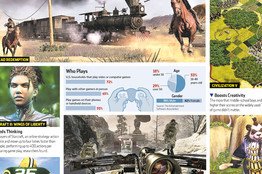 Scientists also found that women—who make up about 42% of computer and videogame players—were better able to mentally manipulate 3D objects, a skill at which men are generally more adept. Most studies looked at adults rather than children.
Scientists also found that women—who make up about 42% of computer and videogame players—were better able to mentally manipulate 3D objects, a skill at which men are generally more adept. Most studies looked at adults rather than children.
Electronic gameplay has its downside. Brain scans show that violent videogames can alter brain function in healthy young men after just a week of play, depressing activity among regions associated with emotional control, researchers at Indiana University recently reported. Other studies have found an association between compulsive gaming and being overweight, introverted and prone to depression. The studies didn’t compare the benefits of gaming with such downsides.
The violent action games that often worry parents most had the strongest beneficial effect on the brain. “These are not the games you would think are mind-enhancing,” said cognitive neuroscientist Daphne Bavelier, who studies the effect of action games at Switzerland’s University of Geneva and the University of Rochester in New York.
Computer gaming has become a $25 billion-a year entertainment business behemoth since the first coin-operated commercial videogames hit the market 41 years ago. In 2010, gaming companies sold 257 million video and computer games, according to figures compiled by the industry’s trade group, the Entertainment Software Association.
For scientists, the industry unintentionally launched a mass experiment in the neurobiology of learning. Millions of people have immersed themselves in the interactive reward conditioning of electronic game play, from “Tetris,” “Angry Birds,” and “Farmville,” to shooter games and multiplayer, role-playing fantasies such as “League of Legend,” which has been played 1 billion times or so in the two years since it was introduced.
“Videogames change your brain,” said University of Wisconsin psychologist C. Shawn Green, who studies how electronic games affect abilities. So does learning to read, playing the piano, or navigating the streets of London, which have all been shown to change the brain’s physical structure. The powerful combination of concentration and rewarding surges of neurotransmitters like dopamine strengthen neural circuits in much the same the way that exercise builds muscles. But “games definitely hit the reward system in a way that not all activities do,” he said.
“There has been a lot of attention wasted in figuring out whether these things turn us into killing machines,” said computational analyst Joshua Lewis at the University of California in San Diego, who studied 2,000 computer game players. “Not enough attention has been paid to the unique and interesting features that videogames have outside of the violence.”
Broadly speaking, today’s average gamer is 34 years old and has been playing electronic games for 12 years, often up to 18 hours a week. By one analyst’s calculation, the 11 million or so registered users of the online role-playing fantasy “World of Warcraft” collectively have spent as much time playing the game since its introduction in 2004 as humanity spent evolving as a species—about 50 billion hours of game time, which adds up to about 5.9 million years.
Games People Play
Top five video games in 2010 (by units sold)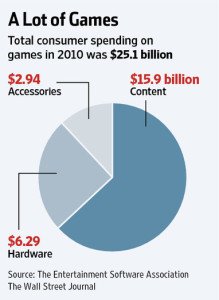
1. Call of Duty: Black Ops
2. Madden NFL 11
3. Halo: Reach
4. New Super Mario Bros.
5. Red Dead Redemption
Top five computer games in 2010 (by units sold)
1. StarCraft II: Wings of Liberty
2. World of Warcraft: Cataclysm Expansion Pack
3. The Sims 3
4. World of Warcraft: Wrath of the Lich King Expansion Pack
5. Civilization V
Source: Entertainment Software Association, NPD Group
With people playing so many hundreds, if not thousands, of different games, though, university researchers have been hard-pressed to pinpoint the lasting effects on cognition and behavior.
Blizzard Entertainment Inc. in Irvine, Calif., which sells “World of Warcraft,” “StarCraft II” and other popular games, did not respond to queries about whether the company supports gaming research or conducts its own studies. Neither did RiotGames Inc. in Santa Monica, which markets “League of Legends.”
The vast majority of the research did not directly compare gaming with hours of other intense, mental activities such as solving math equations. Almost any computer game appears to boost a child’s creativity, researchers at Michigan State University’s “Children and Technology Project” reported in November.
A three-year study of 491 middle school students found that the more children played computer games the higher their scores on a standardized test of creativity—regardless of race, gender, or the kind of game played. The researchers ranked students on a widely used measure called the “Torrance Test of Creativity,” which involves such tasks as drawing an “interesting and exciting” picture from a curved shape on a sheet of paper, giving the picture a title, and then writing a story about it. The results were ranked by seven researchers for originality, length, and complexity on a standardized three-point scale for each factor, along with detailed questionnaires.
In contrast, using cellphones, the Internet, or computers for other purposes had no effect on creativity, they said.
Several new studies shed new light on how videogames affect the brain and behavior — and it’s not necessarily for the worse. A new study suggests videogames boost creativity in children and offer other neural benefits.Lee Hotz has details on Lunch Break. “Much to my surprise, it didn’t matter whether you were playing aggressive games or sport games, not a bit,” said psychologist Linda Jackson, who led the federally funded study of 491 boys and girls at 20 Michigan schools.
Even so, researchers have yet to create educational software as engaging as most action games. Without such intense involvement, neural circuits won’t change, they believe. “It happens that all the games that have the good learning effect happen to be violent. We don’t know whether the violence is important or not,” said Dr. Bavelier. “We hope not.”
Until recently, most researchers studied the effects of gaming on small groups of volunteers, who learned to play under laboratory conditions. Some scientists now are turning the commercial games themselves into laboratories of learning.
In the largest public study of electronic gaming so far, Mark Blair at Simon Fraser University in Vancouver, British Columbia, is analyzing the behavior of 150,000 people who play the popular online game called StarCraft II, pulling together more than 1.5 billion data points of perception, attention, movement and second-by-second decision-making.
By analyzing so much game play, he hopes to learn how people become experts in an online world. That may shed light on how new knowledge and experience can become second nature, integrated into the way we react to the world around us. WSJ

Recent Comments